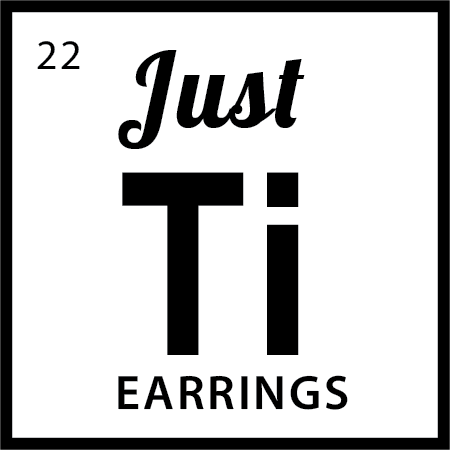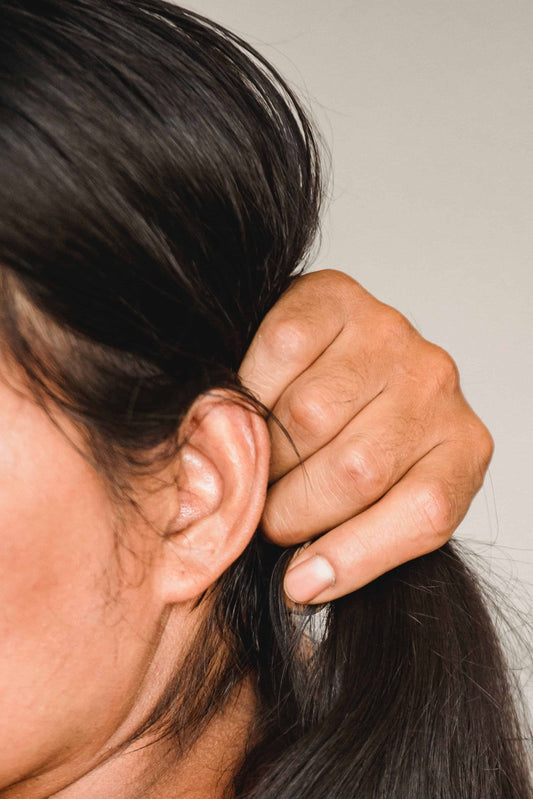Is Gold Hypoallergenic?
Share
When it comes to jewelry, especially earrings, one of the most pressing questions is whether gold is hypoallergenic. The answer isn’t as straightforward as you might hope. Although pure gold itself is hypoallergenic, the alloys used in most gold jewelry can include base metals like nickel or copper. These are known to cause skin irritation and allergies. Gold itself is a pure metal and is generally well-tolerated by most skin types, but the alloys mixed with gold can lead to allergic reactions or even turn the skin green. That is why understanding gold purity is crucial to understanding hypoallergenic materials.
What are karats?
First off, there is a confusion between karat and carat because of their similar pronunciation and their association with materials in jewelry. Karat refers to the purity of gold and carat refers to the weight of gemstones. Now that we have cleared this up, let’s talk gold purity or karats (k).
24K Gold: This is pure gold, consisting of 99.9% gold without any significant mixture of other base metals. It is also very soft making it less suitable for everyday wear. It is very hypoallergenic.
14K Gold: Contains 58.3% pure gold and 41.7% other base metals such as nickel, silver and copper. It is more durable and affordable than higher-karat golds, 14k jewelry is an ideal choice for everyday wear. It is less hypoallergenic.
10K Gold: Contains 41.7% pure gold and 58.3% other base metals such as nickel, silver and copper. It is the least pure form of gold that can still be legally sold as gold jewelry. It is highly durable and cost-effective. It is not hypoallergenic and could cause skin irritation.
The difference between white, rose and yellow gold
White gold is manufactured by alloying other metals with yellow gold. Most commercial alloys are zinc, silver, gold and nickel. White gold is only available up to 21 karats so as to retain the white color. Nickel is one of the most common metals that can cause allergic reactions and skin irritation.
Rose gold is an alloy made from a combination of pure gold, copper and other base metals such as nickel. Rose gold is not hypoallergenic, so if you're sensitive to copper, rose gold may not be right for you. Also, copper is more prone to oxidation than other alloy metals. Copper can turn skin green.
Yellow gold can consist of differing quantities of other base metals such as nickel, copper and silver. 18k yellow gold consists of 15% copper and 10% silver and often includes nickel for added shine.

Gold plated, vermeil, filled - What do these terms really mean?
Understanding terms like gold plated, vermeil, and gold filled is essential for making an informed purchase. Gold plating refers to a thin layer of gold applied over a base metal, which can leach through the gold plating. This can cause allergic reactions or skin irritation for some individuals. Gold plating can wear off quickly and expose the base metal. If you find that your skin turns green or becomes irritated from wearing certain jewelry, it's likely due to the base metal used or a lower karat gold. Vermeil takes things up a notch. This term indicates that the piece is made from sterling silver and coated with a thicker layer of gold. This is in order to ensure durability and reduce the risk of adverse reactions. It is important to note that while vermeil offers increased protection against allergic reactions compared to standard gold-plated items, it still may not be hypoallergenic. Gold-filled is gold that can contain 5% gold alloy by weight. Then gold plating is added on the surface to give protection from wear. This is hypoallergenic assuming the plating is 14k -18k. This makes it an excellent choice for those with sensitive skin.
Is nickel-free important?
Nickel is known to be a very reactive metal which means it can cause allergic reactions. It is one of the most common causes of contact allergies. Gold jewelry may contain base metals or alloys such as nickel. Only 24k Gold is fully hypoallergenic, since lower karat golds are alloys that can contain other non-hypoallergenic elements such as nickel. Therefore, a reputable jeweler can help you to choose nickel-free gold or you can try and test yourself.

Can I be allergic to gold jewelry?
In this investigation into whether gold is hypoallergenic, we find that gold can indeed cause an allergic reaction. Understanding gold purity and comprehending hypoallergenic materials is important to protect ourselves and choose the right jewelry.

